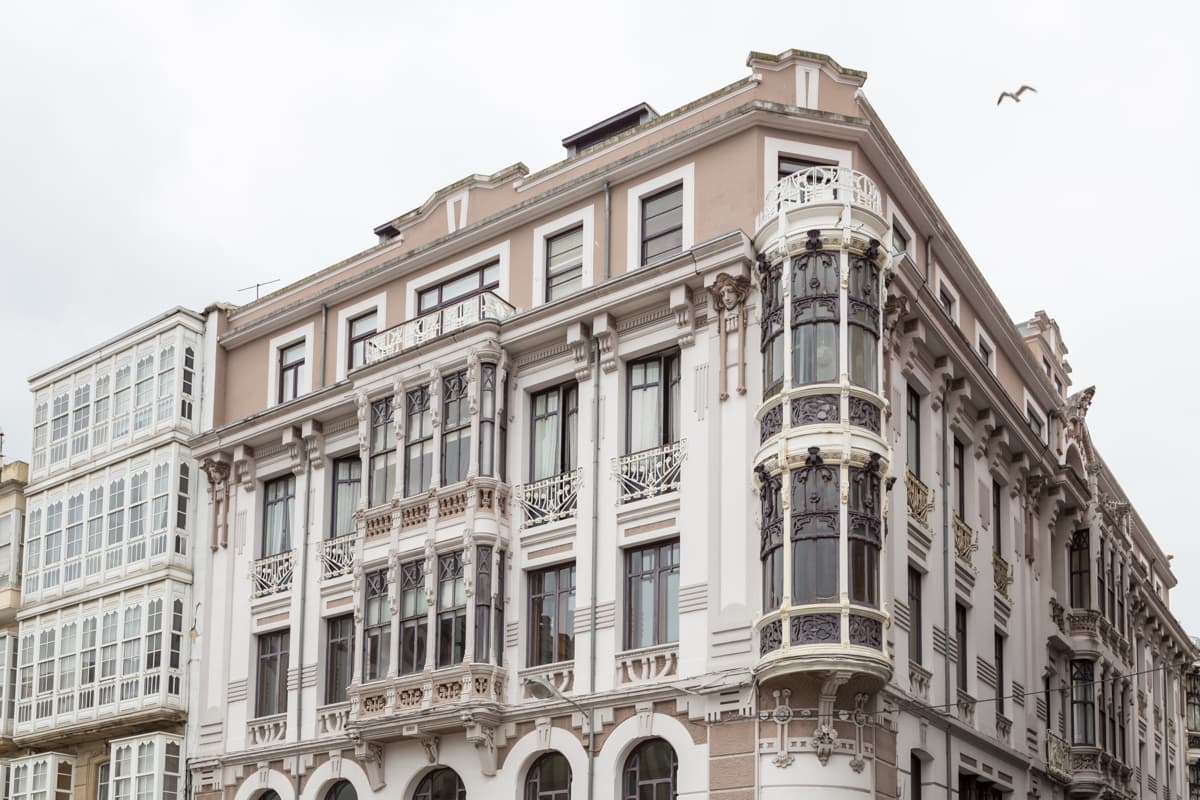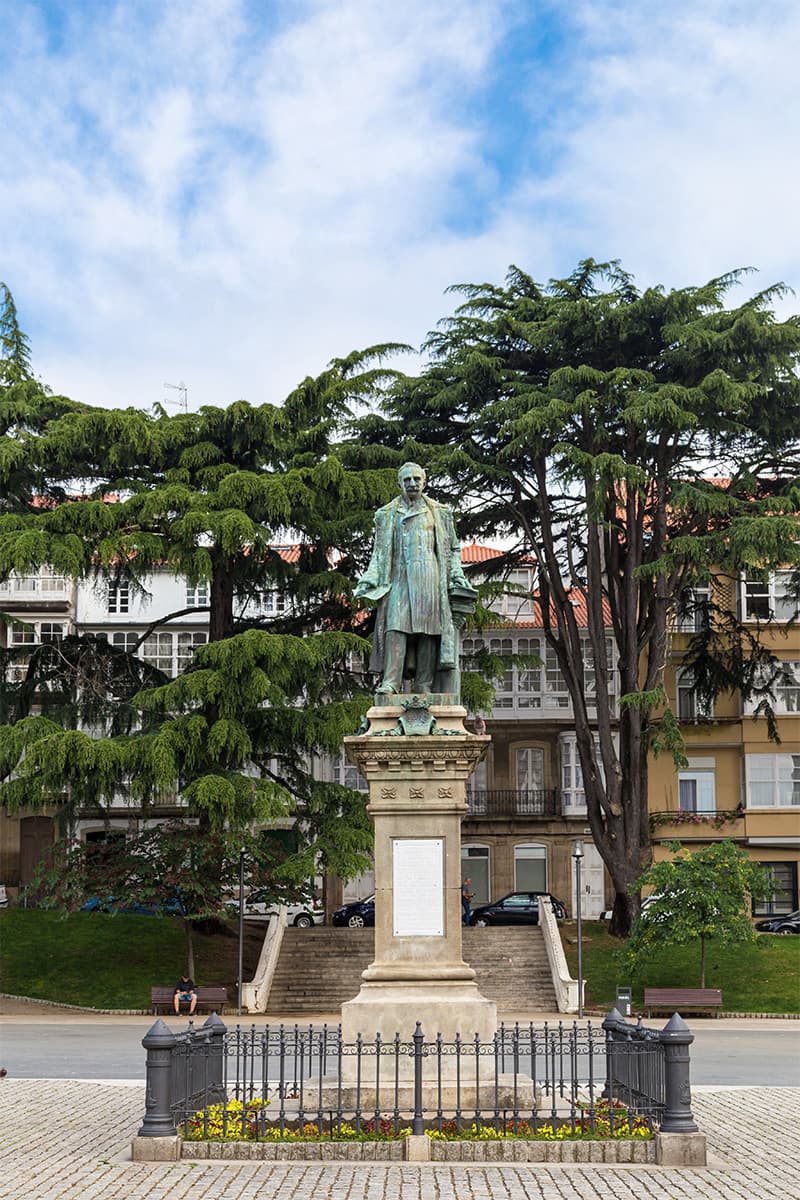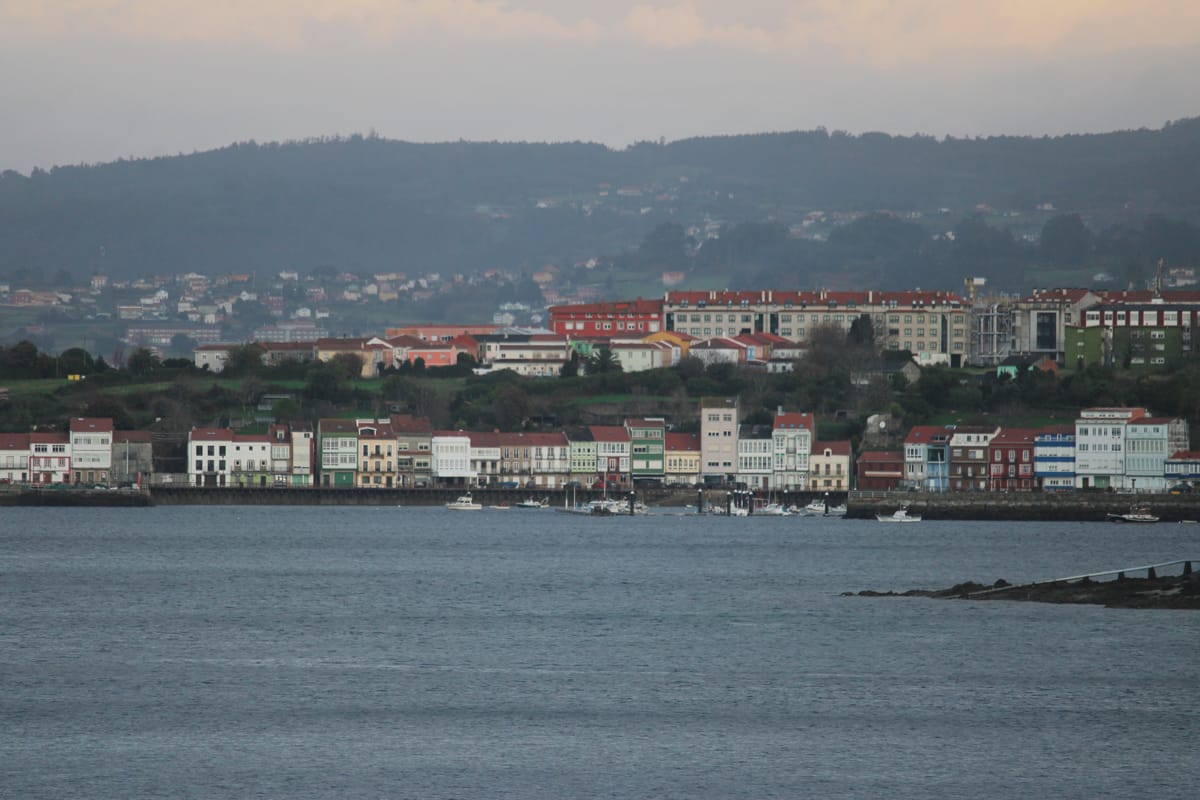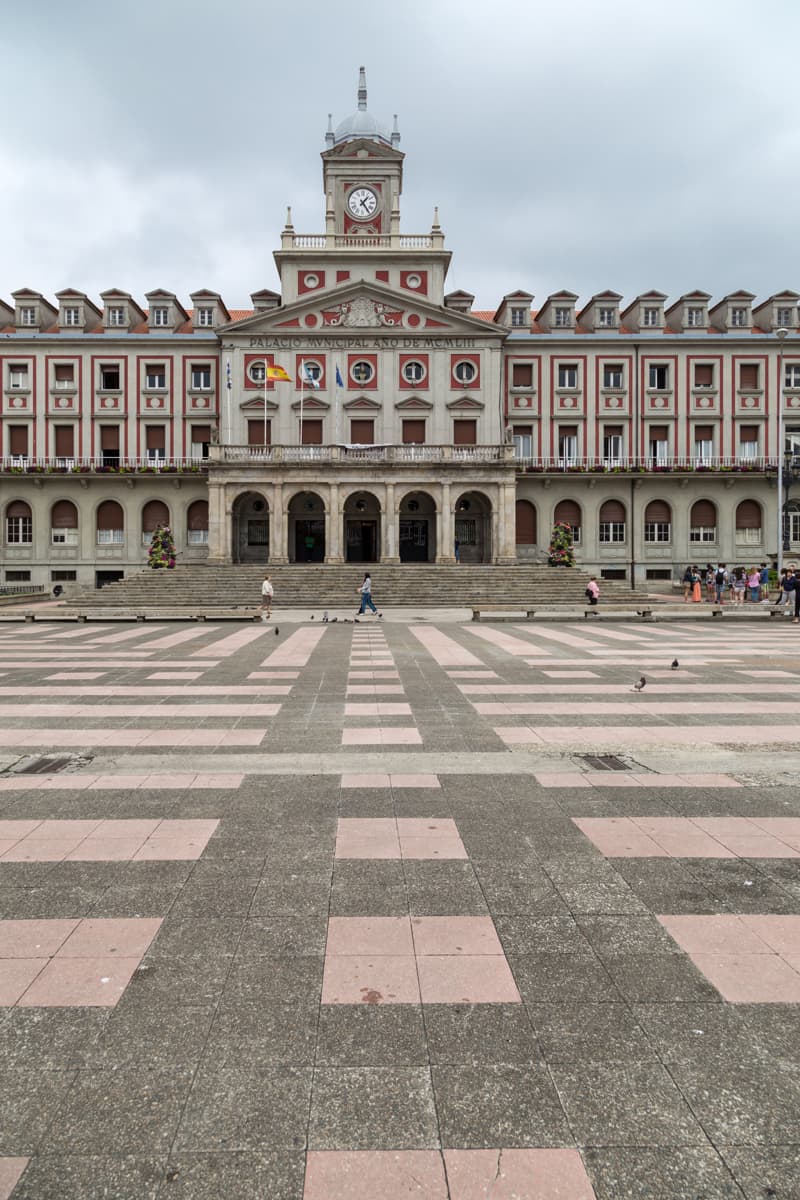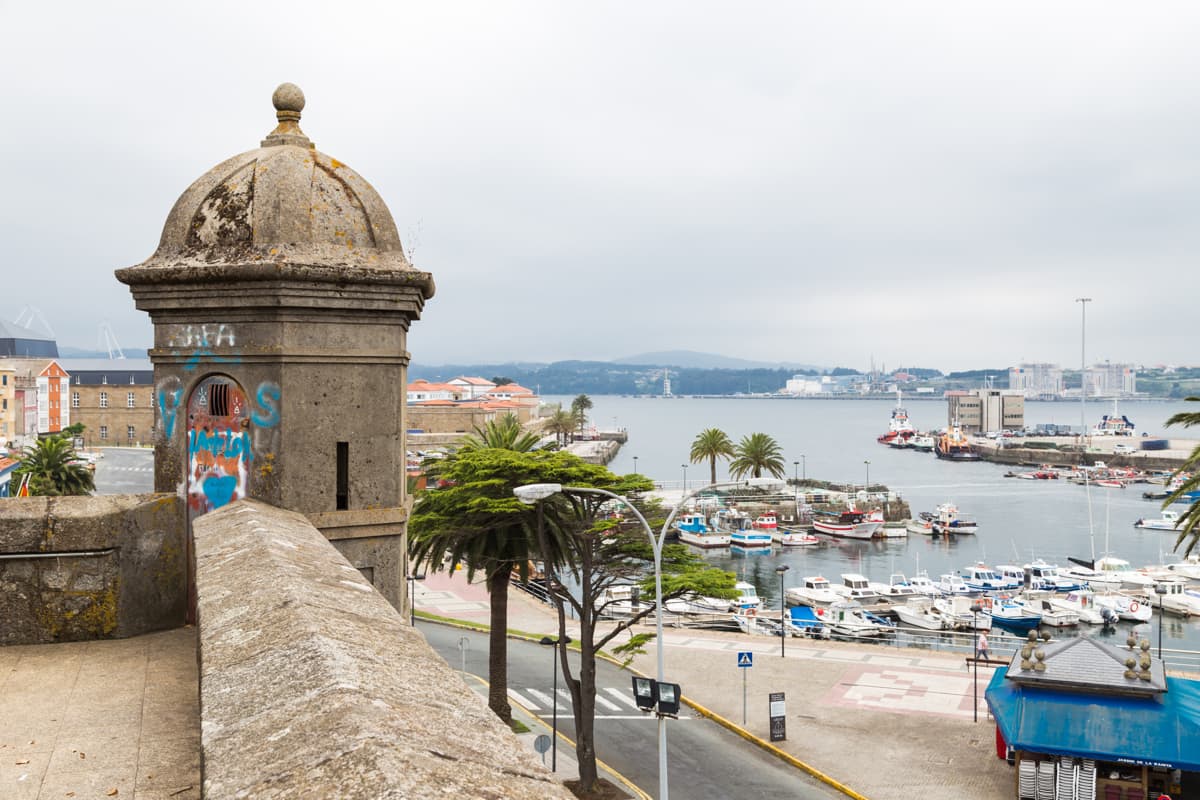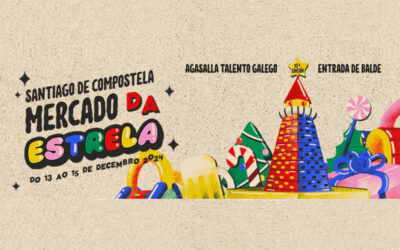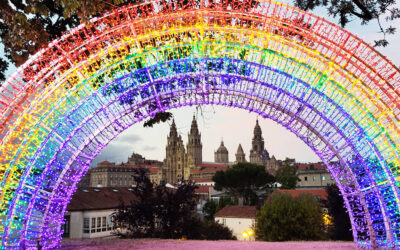visit
ferrol
A city with a history closely linked to the sea and to the great battles that marked its history.
Ferrol, the land of surfing
Ferrol is a city located in the north of the province of A Coruña, Galicia. It is located in the interior of the Ría de Ferrol and is the seventh most populated of the Autonomous Community. It is traditionally oriented to maritime and military activities, since it is home to the facilities of the Spanish Navy and several shipyards.
It also has numerous open sea beaches that are perfect for surfing, paddle surfing and even scuba diving.
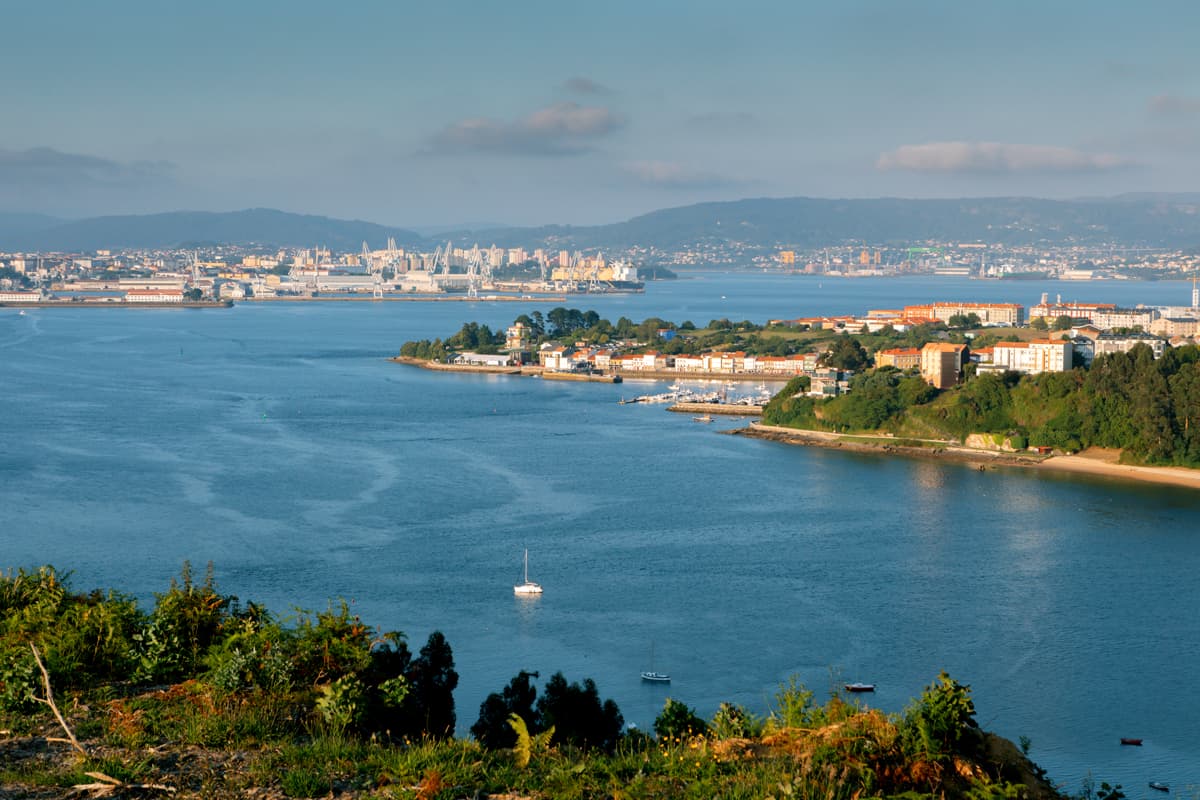
A glimpse of its history
Ferrol has a rich history dating back to antiquity. In the area near Brión archaeological evidence has been found, such as mámoas or dolmens. There are also vestiges of forts in the surroundings, such as Tralocastro, Lobadiz or Santa Comba.
With the arrival of the Romans in Galicia, the region became part of the Empire. They established villages in the area and their main activity was related to fishing. An example of this is the archaeological site of Cariño.
The Middle Ages marked the fall of the Roman Empire and the beginning of the reign of the Suevi. During this period, groups from present-day Great Britain settled in northern Galicia, leaving their mark on the region.
The first written reference to Ferrol appeared in 1087, when it was a small fishing village, with a temple dedicated to San Julián, located in what is now known as the neighborhood of Ferrol Vello.
Under the reign of Alfonso IX, it began to have mayors and was organized as a royal villa, which stimulated trade and the development of the local bourgeoisie.
At the end of the 15th century, Ferrol faced a period of decline due to wars and conflicts that affected the city’s commerce. The wars between Charles V and Philip II against France and England cut commercial ties with these countries and led Ferrol to become an uncontrolled supply of resources for the royal navies.
During the reign of Philip II, the town was sacked and destroyed by the royal armies, which resulted in a drastic reduction of the population and economy.
In 1726, Felipe V recognized the strategic value of the city on the estuary and ordered the construction of the A Graña arsenal and shipyards. This marked the beginning of the naval importance of the town.
In the 18th century, naval engineers planned the Magdalena neighborhood with a geometric layout typical of the Enlightenment, transforming the city, which reached 20,000 inhabitants.
In 1800 the Battle of Brión took place when the British fleet tried to take Ferrol and destroy the shipyards, but the local forces responded quickly, forcing the British to retreat.
In the 19th century, King Ferdinand VII moved the naval activity to Cadiz, leaving Ferrol without military and industrial activity. However, the Marqués de Molíns reactivated the shipyards and, in 1858, Ferrol received the title of city, along with the launching of the first steamship in Spain.
At the beginning of the 20th century it was modernized and became the third largest city in Galicia. In the Civil War, it played a strategic role as a shipbuilding and repair center, which boosted its economy.
Today, Ferrol faces economic challenges, particularly in the naval and real estate sectors. However, this city has not given up and, in recent years, has diversified its industry, improved its infrastructure and promoted tourism.
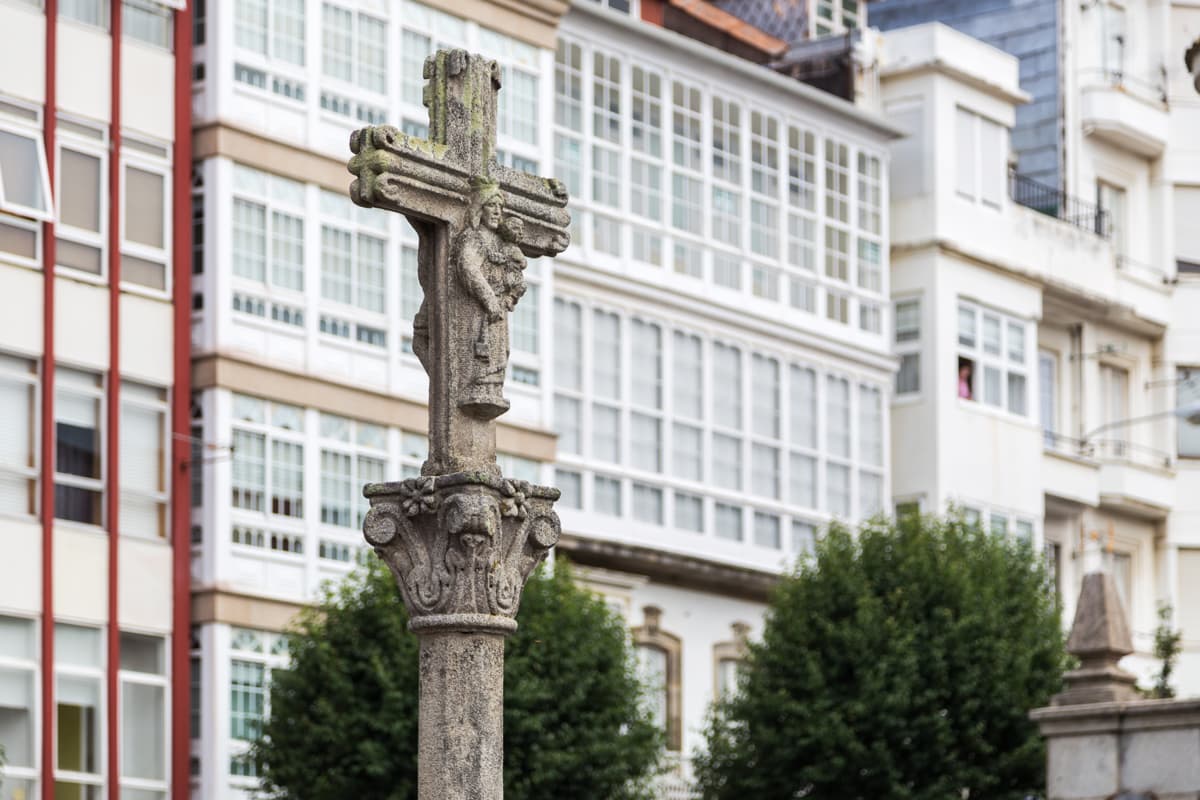
the must-sees of ferrol
The convulsive history of Ferrol, marked by wars and economic decline, has given the city a very attractive visual variety for tourists. Strolling through this city full of history is a pleasure, so we want to tell you exactly what places you should see if you visit.
neighborhood of la magdalena
The Magdalena neighborhood is one of the most famous areas of Ferrol. It is the center of the city and its most commercial area where you can see beautiful modernist buildings and glass galleries.
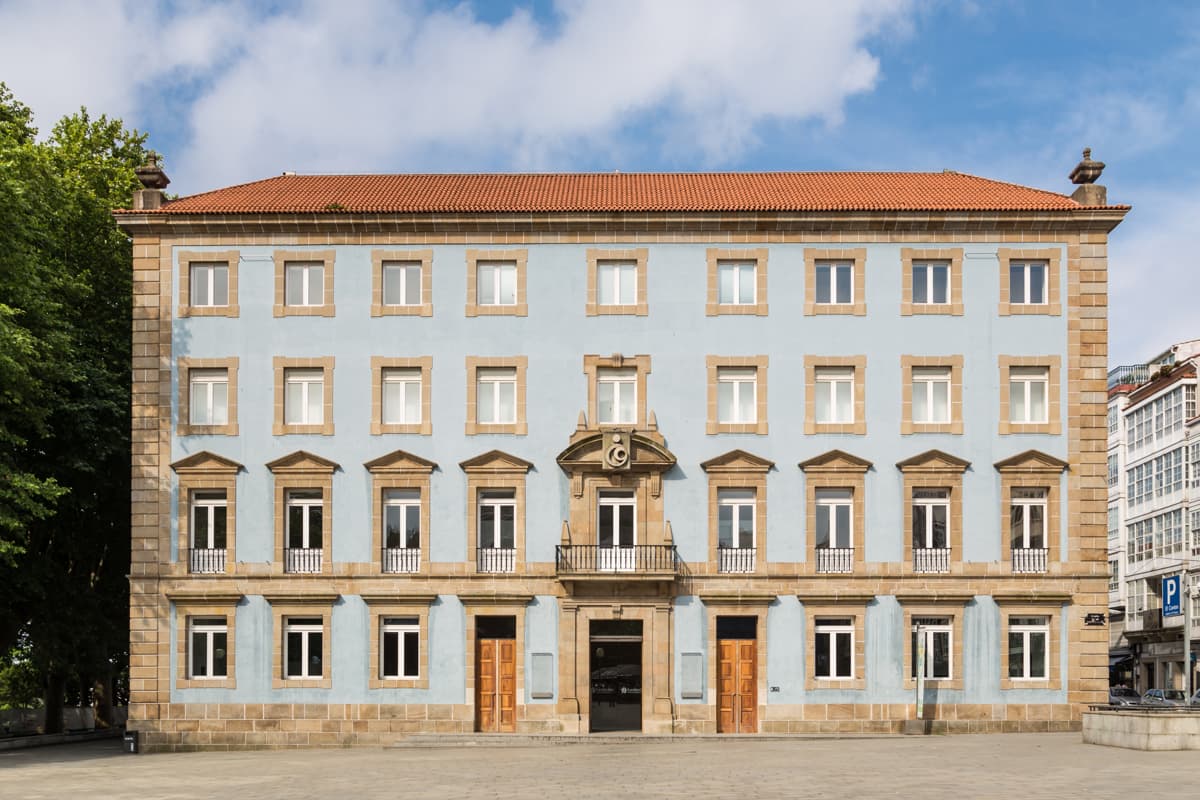
In this neighborhood is the Amboage square, full of terraces and with a statue of the Marquis of Amboage, benefactor of the city, in the center; and the Plaza de Armasin which the impressive Ferrol City Council,an imperialist style building you can’t miss.
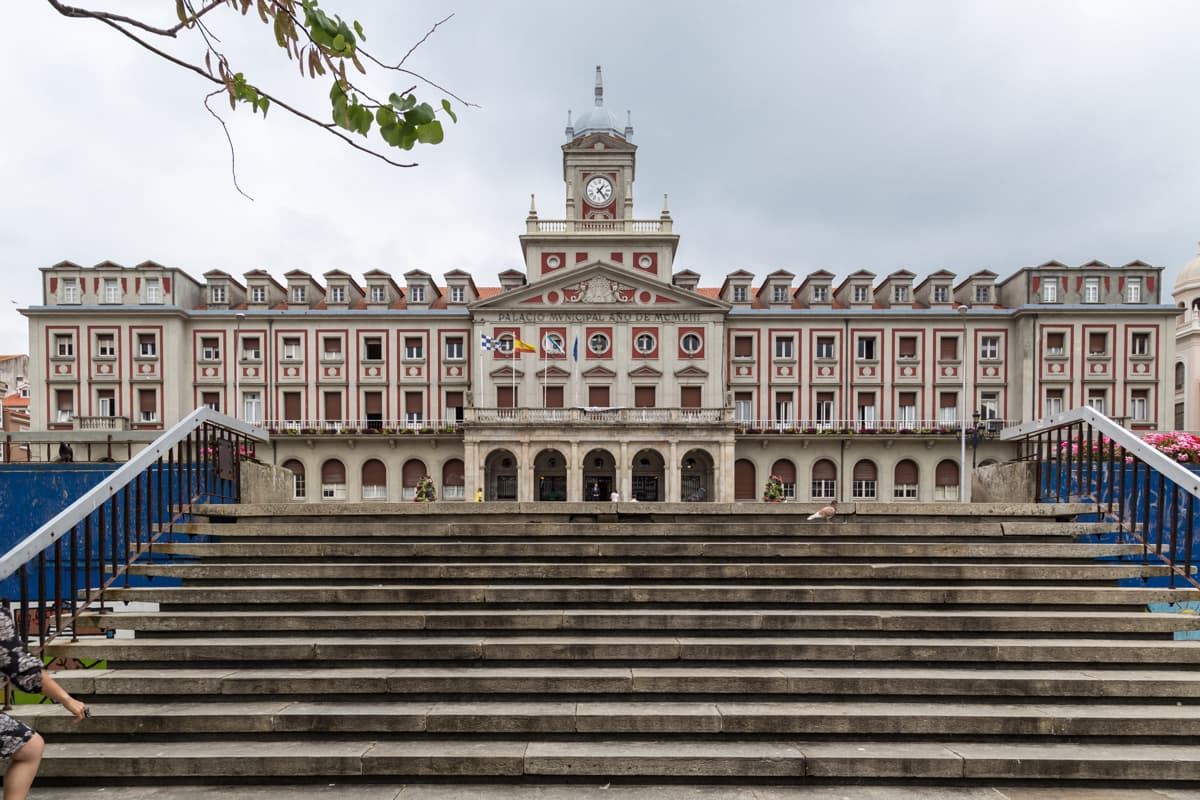
ferrol arsenal
The Arsenal of Ferrol is another of the emblems of the city. It was built during the 18th century by order of Philip V to turn the city into the maritime capital of northwestern Spain.
It is divided into the Military Arsenal, which is still in operation and can only be visited on rare occasions, and the Industrial Arsenal. Part of the latter can be seen, since it houses the Naval Museum and is the headquarters of Exponav.
gardens of herrera
Within the Barrio de la Magdalena, are the Jardines de Herrera, a small but beautiful spot. Inside, it has a beautiful viewpoint overlooking the Ferrol estuary and the Ferrol Arsenal. They also include the Churruca obelisk.
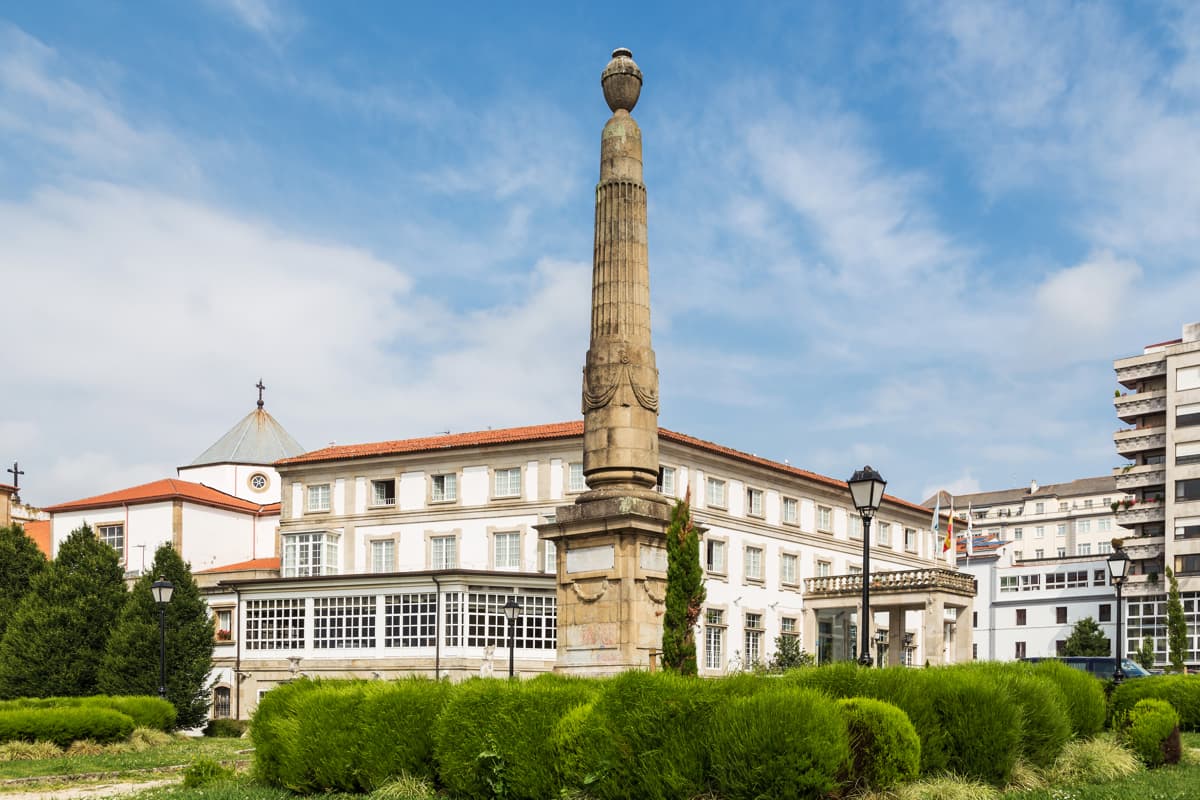
theater of the jofre
The Jofre Theater is a modernist building, designed by Rodolfo Ucha Piñeiro, inaugurated in 1892 to satisfy the naval bourgeoisie that dominated Ferrol. It was one of the most innovative theaters of its time and the first stone theater in the city. Its facade stands out, as well as its interior.

galicia square
The Plaza de Galicia is one of the largest squares in Ferrol. In its center is the Monument to the Fallen in Africa, built during Franco’s regime and pays tribute to the fallen soldiers in the battles of North Africa.
In its lower part is the Puerta del Dique, of neoclassical style and one of the most elegant of the Arsenal Militar. It has the coat of arms of Carlos III.
canido neighborhood
Another place not to be missed is the Canido neighborhood. This area has become a mecca of urban art at the Galician level and has the so-called route of the meninas, a project that managed to revitalize the neighborhood and give it an inimitable tourist attraction.
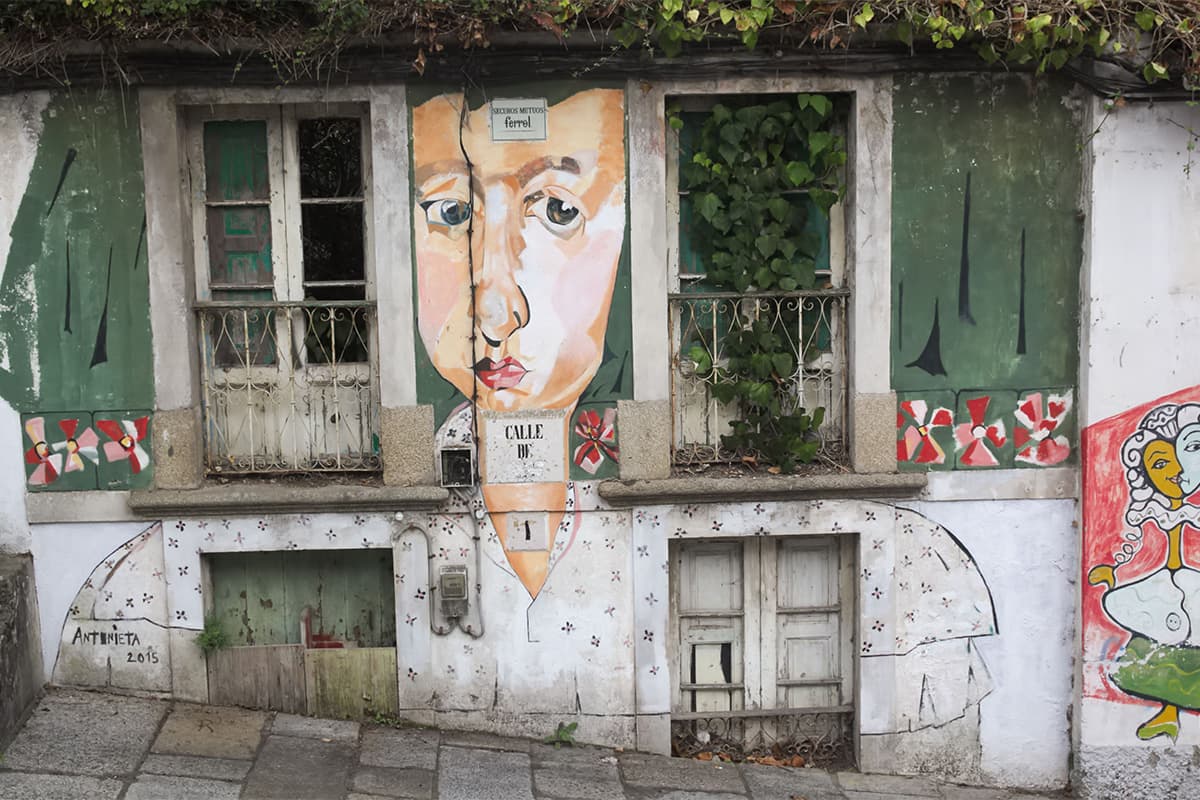
“Ferrol – Barrio de Canido – Meninas – 045” by Tapetum is licensed under CC BY-SA 2.0.
It began with Eduardo Hermida, who painted one of Velázquez’ s famous Meninas on the walls of a street. This was followed by hundreds of new performances that have filled the entire neighborhood of Canido.
In addition, in 2008 the city began to celebrate a cultural festival in which new artists come to decorate more facades of the site, with this reference painting. Therefore, a walk through this place full of art and creativity is a must.
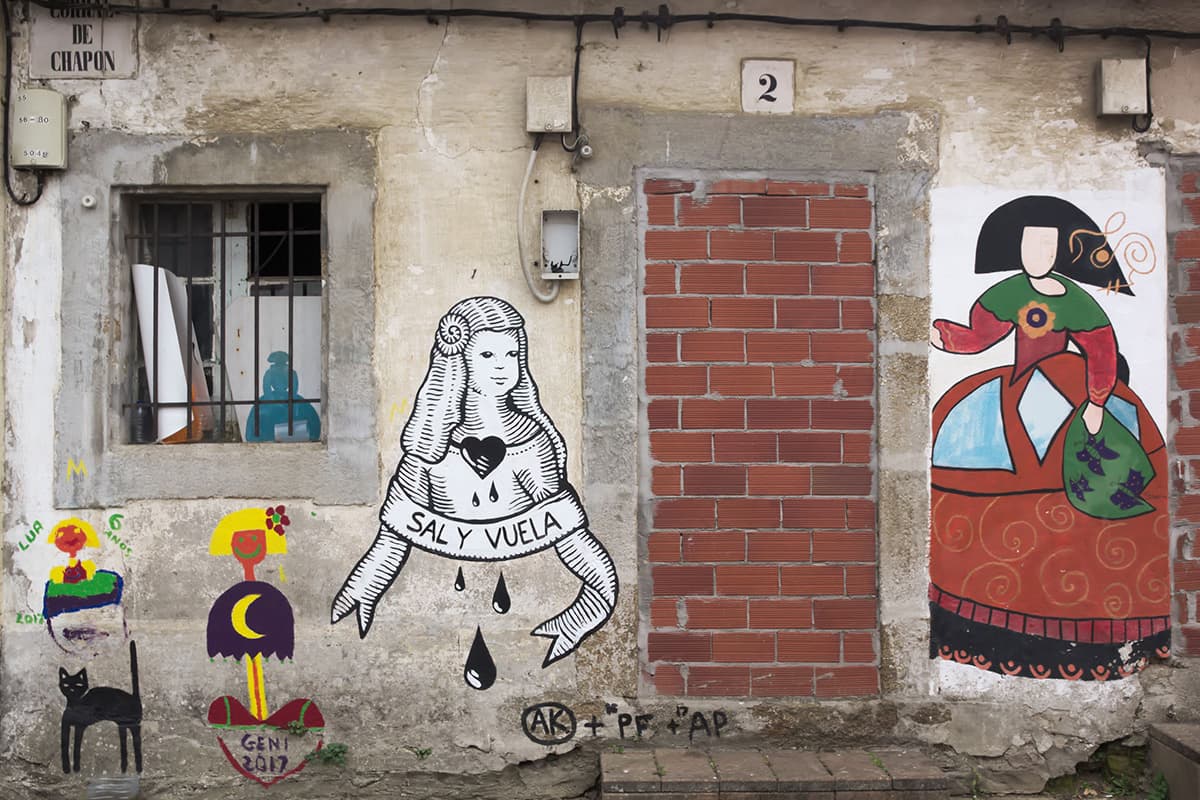
“Ferrol – Barrio de Canido – Meninas – 018” by Tapetum is licensed under CC BY-SA 2.0.
naval museum and exponav
In the former Presidio Barracks is now the Naval Museum, a tourist attraction completely free of charge. It belongs to the Spanish Navy and contains numerous exhibits related to the naval world, such as model ships, antique weapons and navigation charts. It is a journey through the history of the Navy throughout its history.
For its part, the National Exhibition of Naval Construction of Ferrol or Exponav, is one of the largest museums in Spain and Europe dedicated to shipbuilding. It opened in 2008 in the Blacksmiths Building of the Arsenal and its exhibits tell the history of shipbuilding in the Iberian Peninsula, with special attention to the shipyards of Ferrol.
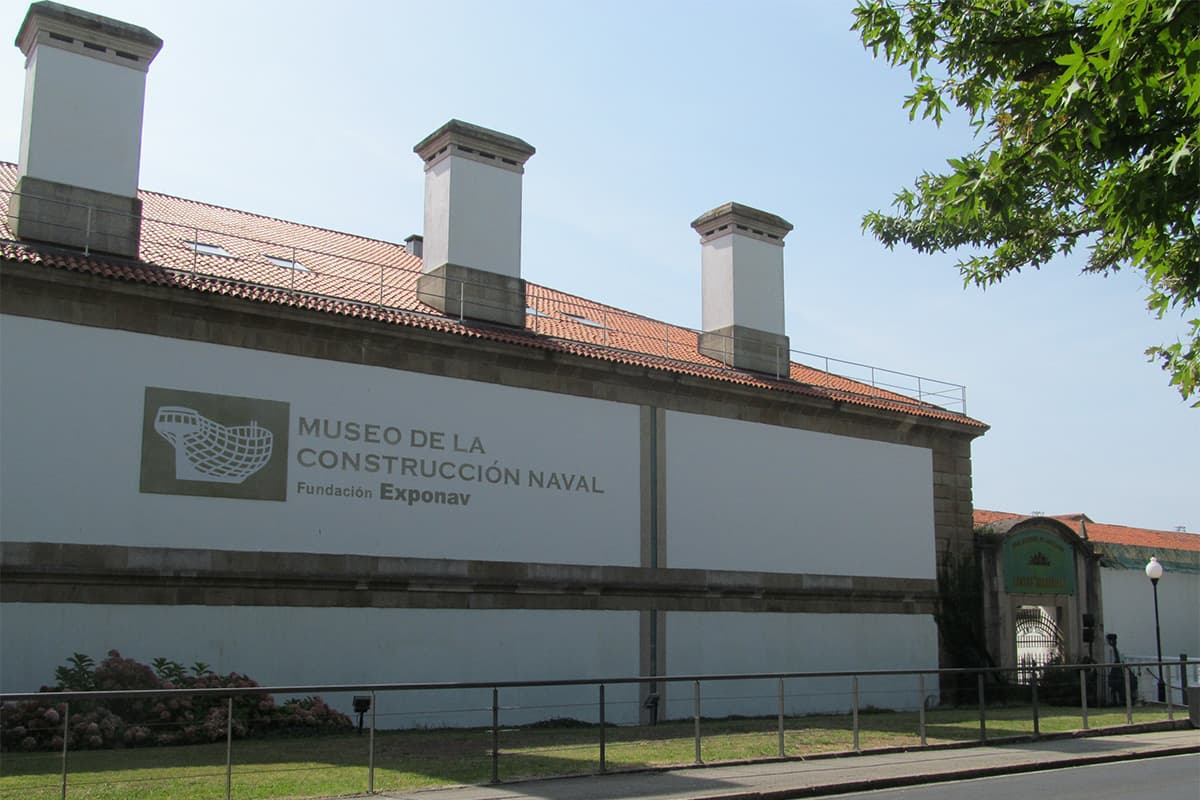
“Exponav and Naval Museum 102” by Oilisab is licensed under CC BY-SA 4.0.
ferrol vello
Ferrol Vello is the old part of the city. Its old buildings, narrow streets and architecture make Ferrol Vello a perfect place to stroll around.
In front of it is the Port of Curuxeiras, an old fishing port that marks the beginning of the English Way in Ferrol. Around it there are restaurants and tapas areas, perfect to stop and contemplate the sea.
St. Julian’s Co-cathedral
The Co-cathedral of San Julián de Ferrol is a neoclassical building dedicated to the patron saint of the city. It replaced the original church of Ferrol Vello, which disappeared with the construction of the Arsenal.
In 1959, it was elevated to the category of Co-cathedral, sharing the episcopal see with Mondoñedo.
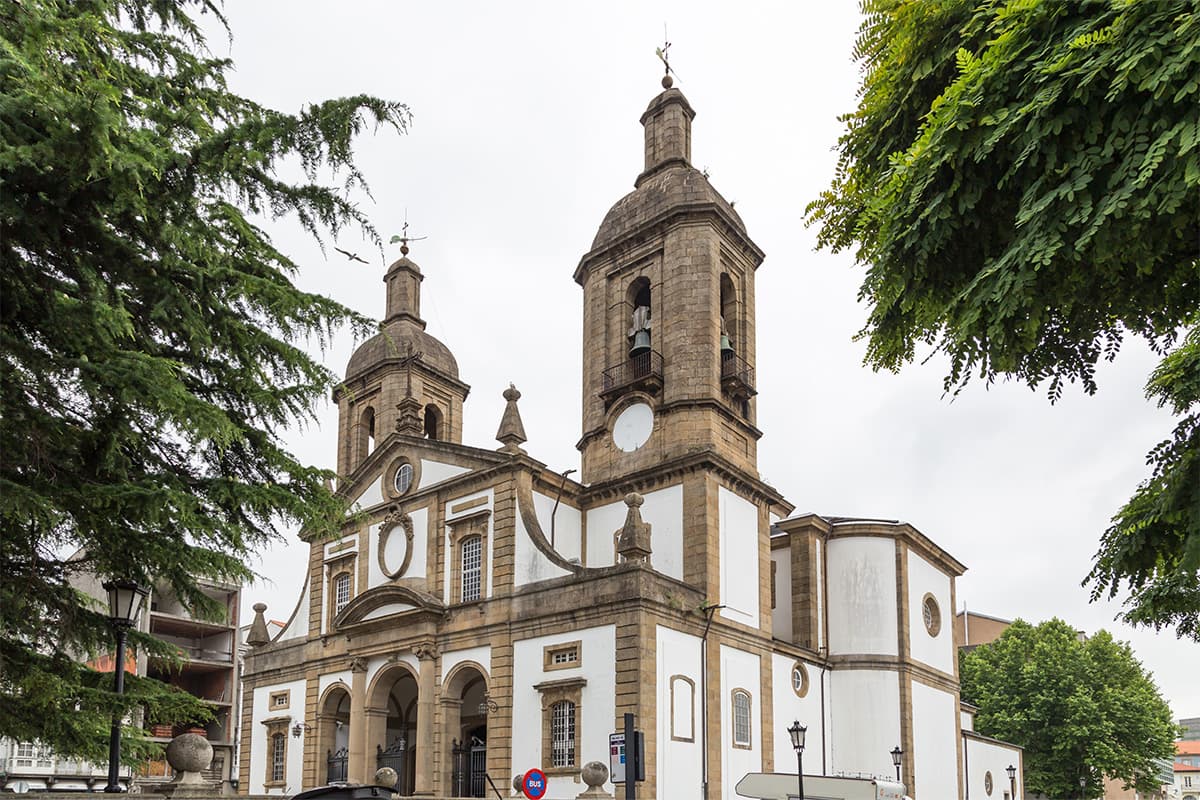
gastronomy and leisure
In a city with a history so closely linked to fishing, it is not surprising that its gastronomy is so closely linked to the sea. Among the dishes you can try are clams and cockles from the estuary, octopus mugardesa, marraxo de Cedeira or veal da Capelada.
To put the icing on the cake, you can eat a typical dessert, such as rice pudding or Castiñeira cake.
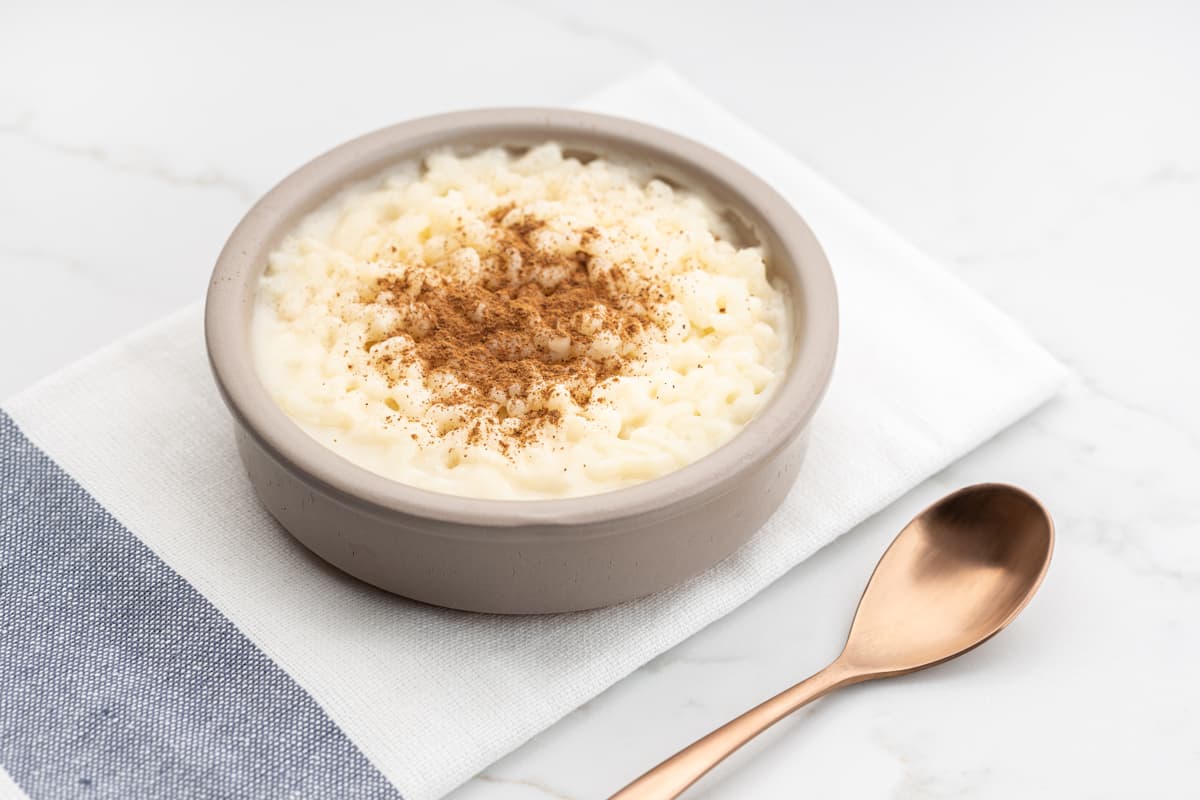
events and festivals
The most famous festivities and celebrations in Ferrol are the festival of the Night of the Pepitas, the day of San Julian, Easter and the pilgrimage of Chamorro.
night of the nuggets
The Night of the Nuggets is a celebration with more than a century of history. In them, citizens become tunos and go through the streets singing rondallas and paying tribute to the women of Ferrol. It is celebrated every March 18, on the eve of St. Joseph’s Day, and has been declared of Tourist Interest in Galicia.
St. Julian’s Day
St. Julian’s Day is the day of the patron saint of the city, which takes place on January 7. During the day, several activities are held and, commonly, rice pudding is handed out for tasting. The ‘Ferrolano del Año’ (Ferrolian of the Year) is also named at the Teatro Jofre.
holy week
The Holy Week of Ferrol is the main celebration of the city and the most spectacular of all the Autonomous Community. In just 9 days, it brings together many processions, brotherhoods, exhibitions and cultural events. The city devotes body and soul to its celebration and attracts thousands of visitors.
In fact, it was declared of International Tourist Interest in 2014.
chamorro pilgrimage
During the pilgrimage of Chamorro, thousands of devotees go up to the sanctuary of the Virgin of Chamorro to venerate the Virgin and offer her candles and votive offerings. Musical and popular activities are held here to liven up the day. In addition, the views of the city and the estuary from this site are spectacular.
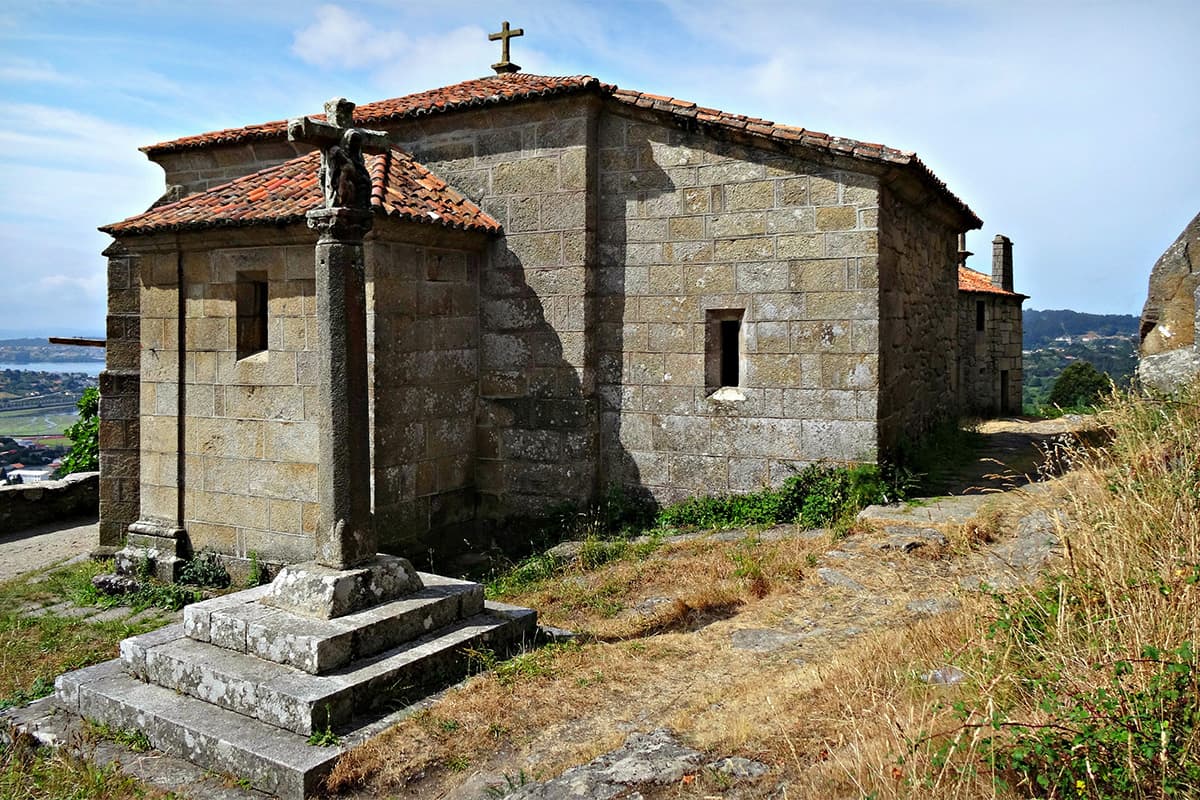
“File:Ermita de Chamorro o de Nuestra Señora del Nordés – panoramio.jpg” by carrodeguas is licensed under CC BY-SA 3.0.
News
Mercado da Estrela returns to highlight local talent
The traditional Mercado da Estrela will once again turn Santiago de Compostela into a meeting point for the celebration of Galician talent, crafts and local commerce. It will take place this weekend, from December 13 to 15.
What to do in Santiago this December
This 2024 is about to come to an end. To celebrate it, we bring you a list of plans and other activities so you know what to do in Santiago de Compostela during the month of December.
The Apalpador, the Galician Santa Claus
When you think of Christmas, the first thing that usually comes to mind is the figure of Santa Claus or the Three Wise Men, fantastic characters that bring joy and illusion to the little ones. But many territories have their own icons, as is the case of the Apalpador.


